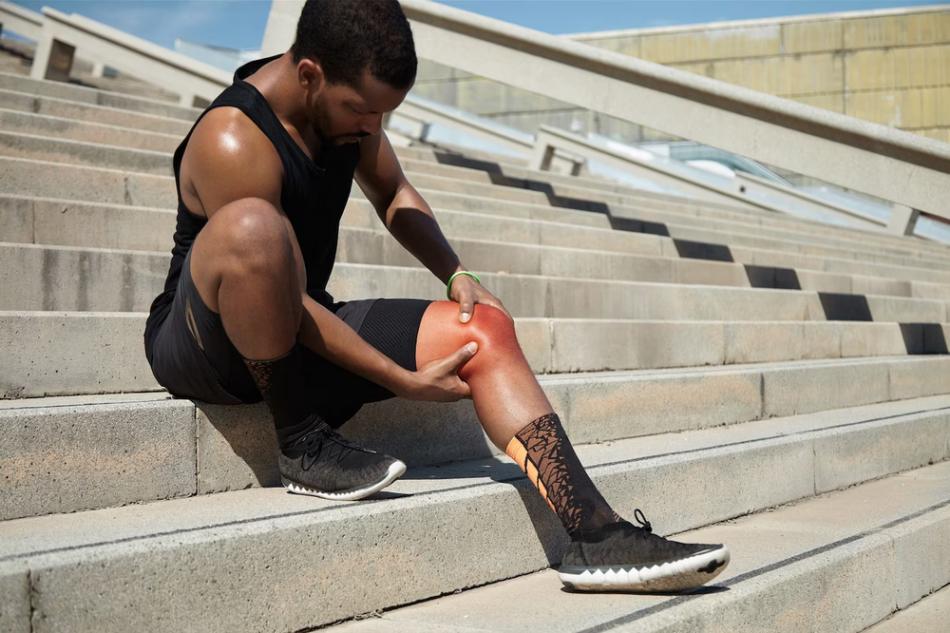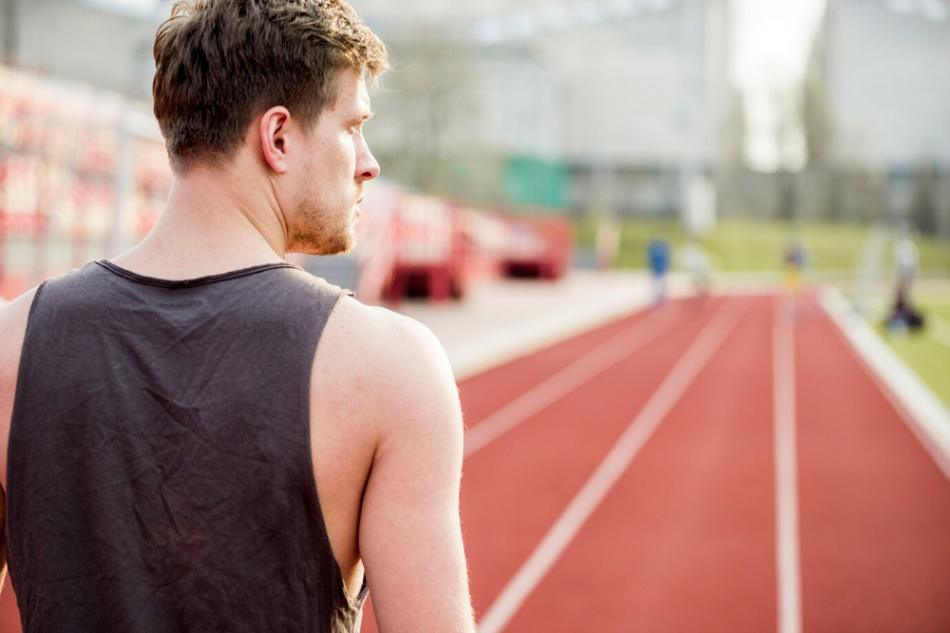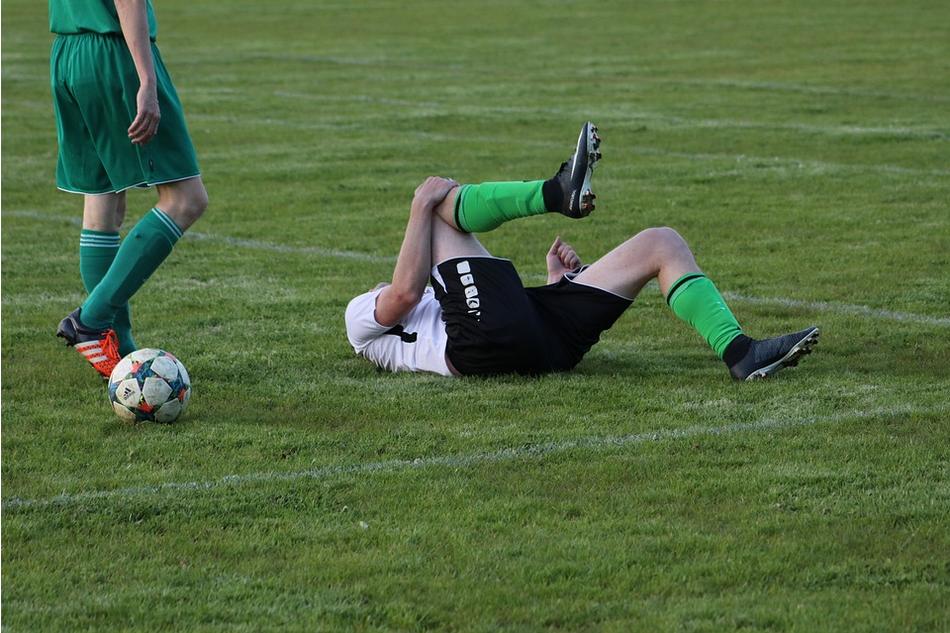Sports injuries are an unfortunate reality of athletic activities. Whether they occur during practice or in competition, sports injuries can result in serious damage to the body and can require extensive treatment or rehabilitation to recover from.
Determining and assigning liability for sports injuries can be a complicated process, as there are a variety of factors that may contribute to an athlete’s injury. The purpose of this article is to discuss the various types of sports injuries, the causes of sports injuries, and the process of determining liability for sports injuries.
Additionally, the article will explore ways of protecting athletes from injury, the legal rights of athletes, and ways of protecting institutions from liability.
Types of Sports Injuries
Sports injuries can be classified into three main types: common acute sports injuries, chronic sports injuries and overuse, and traumatic brain injuries in sports.
Common acute sports injuries are usually caused by direct contact between players or contact with the playing surface and can cause severe damage to muscles, bones, or ligaments.
Chronic sports injuries and overuse occur over extended periods of time, when players overstress the same body part and can cause tendonitis, bursitis, or stress fractures.
Traumatic brain injuries in sports are caused by direct contact with another player, a fall, or an object, and can result in concussions, which can have long-term effects on the brain.
Common Acute Sports Injuries
Acute injuries sustained during physical activity are a frequent occurrence and can have long-term implications for an individual’s health.
Common acute sports injuries include sprains, strains, concussions, contusions, and fractures.
Sprains occur when ligaments, which are the tough bands of tissue connecting bones, are stretched or torn.
Strains occur when muscles or tendons are overstretched or torn.
Concussions are traumatic brain injuries caused by a blow to the head that may result in a temporary loss of consciousness.
Contusions are bruises caused by a direct blow to the body.
Finally, fractures are breaks in the bone caused by a direct blow or force.
These injuries can be extremely painful and can cause a great deal of discomfort.
It is important for individuals to take the necessary precautions to avoid sustaining these injuries.
This includes engaging in proper warm up and cool down before and after physical activity, using protective gear, and consulting with a physician to ensure one is physically prepared for physical activity.
Additionally, it is important to recognize the signs and symptoms of these injuries and to seek medical assistance when needed.

Chronic Sports Injuries and Overuse
Prolonged physical activity can lead to chronic sports injuries and overuse, resulting in long-term damage if left untreated. Chronic sports injuries and overuse typically occur over a period of time due to repetitive movements or trauma, and can affect the muscles, tendons, ligaments, and joints. Common examples of chronic sports injuries and overuse include: tendonitis, bursitis, rotator cuff injuries, stress fractures, and tennis elbow.
The effects of chronic sports injuries and overuse vary depending on the severity and type of injury. In some cases, the damage can be permanent and require surgery or other medical procedures. In other cases, more conservative treatment options may be available, such as rest, stretching, physical therapy, and medications. It is important for athletes to take preventive measures to reduce their risk of chronic sports injuries and overuse, such as using proper technique and wearing proper protective equipment.
| Condition | Symptoms |
| Tendonitis | Pain, stiffness, swelling, tenderness |
| Bursitis | Pain, swelling, warmth, redness |
| Rotator Cuff Injury | Pain, weakness, stiffness |
| Stress Fractures | Pain, swelling, tenderness |
| Tennis Elbow | Pain, tenderness, swelling |
Traumatic Brain Injuries in Sports
Playing contact sports can put athletes at risk for traumatic brain injuries, which can result in long-term physical and cognitive impairments. These injuries can occur when an athlete experiences a bump, blow, or jolt to the head or body.
A traumatic brain injury can range from a minor concussion to a more severe injury, such as a skull fracture. Symptoms of a traumatic brain injury can include headache, dizziness, confusion, nausea, difficulty sleeping, and fatigue. In more severe cases, the athlete may experience decreased coordination, slurred speech, and changes in behavior.
The severity of a traumatic brain injury can depend on the force of the impact, the location of the injury, and the type of sport an athlete plays. For example, football players may be more prone to experiencing a traumatic brain injury due to the contact nature of the sport.
As a result, organizations have implemented safety protocols to reduce the risk of traumatic brain injuries in athletes. These protocols include proper use of safety equipment, such as helmets, and following return-to-play guidelines after an injury.
Causes of Sports Injuries
Inadequate Training or Preparation is a common cause of sports injuries. This can be due to lack of physical conditioning, lack of knowledge of proper technique, or lack of instruction in safe playing practices.
Poor Equipment or Safety Gear can also be a contributing factor, such as substandard safety gear, faulty equipment, or incorrect size of equipment.
Unsafe Playing Conditions can also create a risk of injury, such as poor lighting, hazardous playing surfaces, or inadequate medical facilities.
Inadequate Training or Preparation
Neglecting to provide appropriate training or preparation for an activity can lead to potentially harmful outcomes. Whether the athlete is an amateur or a professional, the lack of a structured training program can lead to increased risk of sports injuries.
Adequate conditioning is essential for the safe performance of any physical activity, and should be tailored to the activity itself. For example, jumping into a strenuous activity without warming up and stretching can lead to muscle tears, joint sprains, and other injuries.
Moreover, if a person is not taught the correct technique for a particular sport, they may be more likely to experience an injury. Inadequate training or preparation can also lead to an increased risk of liability for the person or organization responsible for providing the training.
If an athlete is not adequately trained or prepared, they may not be aware of the risks associated with the activity and may argue that they were not informed of the potential dangers. This could lead to a lawsuit, as the person or organization responsible for training could be held liable for any injuries that occur.
For this reason, it is essential that all activities are accompanied by an appropriate training program that is tailored to the individual needs of the athlete.
Poor Equipment or Safety Gear
In addition to inadequate training or preparation, poor equipment or safety gear can also contribute to sports injuries and liability. It is important to ensure that the equipment used for sports activities meets safety standards and is properly maintained. If equipment is faulty, outdated, or improperly maintained, it can put athletes at risk for serious injury.
To reduce the risk of injury from inadequate equipment or safety gear, the following steps can be taken:
- Regularly inspect and test all equipment to ensure it is up to safety standards.
- Replace any damaged or worn parts to prevent them from malfunctioning.
- Provide proper instruction on how to use the equipment correctly.
- Provide athletes with the appropriate safety gear such as helmets, pads, and protective clothing.
By taking these steps, the risk of sports injuries and liability due to inadequate equipment or safety gear can be minimized. It is essential that athletes, coaches, and administrators all take the necessary steps to ensure that athletes are provided with the necessary equipment and safety gear to safely participate in their sport.
Unsafe Playing Conditions
Playing in unsafe conditions can lead to serious consequences for athletes and put them at risk of harm. Unsafe playing conditions can be caused by a variety of factors, including poor field maintenance, inclement weather, and inadequate lighting.
Poor field maintenance can create dangerous conditions that include uneven surfaces, holes, and exposed wires. These can lead to an increased risk of falls, sprains, and muscle strains.
Inclement weather, such as strong winds, rain, and snow, can reduce visibility and cause treacherous footing, which can lead to athletes slipping and falling or colliding with one another. Inadequate lighting can also create safety hazards, as it can prevent athletes from seeing obstacles in their environment.
Unsafe playing conditions can also contribute to the development of more serious injuries, such as head and spinal trauma. Additionally, athletes may be exposed to health risks, such as heat-related illnesses, due to playing in extreme temperatures.
In some cases, legal action may be taken against the responsible parties if it is found that the unsafe conditions were due to negligence, such as failing to maintain the playing field or not properly preparing for inclement weather. To avoid harm to athletes, it is important for organizations to take the necessary steps to ensure that playing conditions are safe and appropriate.
Determining Liability for Sports Injuries
Negligence in sports injury cases typically involves an injury caused by a coach or another individual who had a duty of care to the injured person, and breached that duty of care.
Product liability for defective equipment includes cases in which the injured person was using a piece of equipment that was either defective or not properly maintained.
Premises liability for unsafe facilities involves a situation in which a sports facility is unsafe or hazardous, and the injured person is able to prove that the facility was the cause of their injury.
Negligence in Sports Injury Cases
Participation in organized athletics can bring not only joy, but also legal consequences should a participant suffer an injury due to the negligence of another. In such cases, the injured party may be able to prove that the other participant, coach, or organization was negligent in their duty of care to the injured athlete.
In order for a successful negligence claim to be made, the injured party must be able to prove that the party responsible had a duty of care to the injured athlete, breached that duty, and caused harm to the athlete in the form of an injury.
The statutes of limitations for bringing a lawsuit for negligence in sports injury cases vary widely by jurisdiction. Generally, the statutes of limitations may range from one to six years, depending on the severity of the injury and the age of the injured party.
Due to the complexity of the legal process, it is important that the injured athlete consult an experienced attorney to ensure that their legal rights are protected.
Product Liability for Defective Equipment
Product liability claims can arise when a person is injured due to a defect in a piece of sports equipment. This can involve both the design of the item and the manufacturing process, as either can lead to a dangerous product.
This type of claim is particularly relevant when it comes to sports equipment, as safety is of paramount importance. It is important for manufacturers to ensure that their products are of a high quality, to avoid the risk of injury.
Product liability claims can also arise if a seller fails to warn customers of the potential risks posed by a product. For example, if a sports equipment manufacturer does not properly explain the proper use of the item, or fails to warn of potential dangers, they may be liable for any injuries sustained.
Furthermore, if a product is not properly labeled with safety warnings or instructions, the manufacturer may be liable for any injuries caused.
Premises Liability for Unsafe Facilities
Premises liability is a legal concept which holds property owners responsible for any accidents that occur on their property due to unsafe or hazardous conditions.
This responsibility applies to sports injuries as well, as property owners have an obligation to ensure that their facilities are safe for athletes. This includes making sure that the equipment is properly maintained and that the playing area is free from hazards.
If the property owner fails to meet these standards, they may be liable for any injuries that occur as a result. This can include both physical and psychological damage caused by the unsafe conditions.
Sports facility owners must also take into account additional risks such as weather-related hazards. If a property owner fails to properly prepare the playing field for inclement weather, they may be held liable for any injuries that occur due to the hazardous conditions.
They must also be aware of any changes in the environment that could cause potential hazards, such as sudden temperature drops or an unexpected increase in wind speed. By being aware of these potential risks, property owners may be able to avoid premises liability for sports injuries.
Protecting Athletes from Injury
With the increasing complexity of athletic activities, it is essential to ensure the safety of participating athletes and protect them from the potential risk of injury.
To accomplish this, the following measures should be taken:
- Ensure that all equipment and facilities used are up to date and meet safety standards
- Educate athletes on proper safety practices and techniques
- Develop and enforce strict rules and regulations for participating athletes
- Utilize qualified coaches to supervise and direct athletes
- Invest in preventive measures such as proper warm-up exercises and hydration to reduce the risk of injury

Legal Rights of Athletes
In order to protect athletes from injury, it is essential to consider their legal rights. The legal rights of athletes pertain to various aspects of their involvement in sports, including their safety, fair treatment, and security.
It is important to understand how the legal rights of athletes can impact their participation in sports and the potential for injury.
The legal rights of athletes are generally based in contract law, which includes the rights to protection from harm, fair treatment, and reasonable compensation for services rendered. This includes the right to be compensated for any medical expenses, lost wages, and other damages associated with sports-related injuries. It also includes the right to appeal any disciplinary action taken against them.
Additionally, athletes should have the right to challenge any policies or rules that would place them in a potentially dangerous situation. Furthermore, athletes should also be ensured a safe playing environment that does not put them at risk for injury.
These legal rights are necessary to ensure that athletes are protected from injury and are treated fairly and safely. It is also important that the rights of athletes are respected and enforced, as it is essential for the safety and well-being of all athletes.
By understanding and respecting the legal rights of athletes, sports organizations can ensure that athletes are protected from injury and are treated fairly and safely.
Protecting Institutions from Liability
By understanding and enforcing the legal rights of athletes, institutions can protect themselves from legal liabilities arising from sporting activities. This includes taking proactive measures to:
- Educate athletes and staff on the legal rights of athletes
- Ensure athletes have access to adequate medical care
- Establish written policies to protect athletes from discrimination or other forms of harassment
- Monitor compliance with applicable laws and regulations
Additionally, institutions should implement measures to ensure that athletes are treated fairly and respectfully, such as providing clear and consistent expectations for behavior and communications.
Furthermore, institutions should take steps to protect athletes from potential risks, such as establishing safety protocols for practice and competition, as well as offering appropriate support services to address mental health concerns.
Taking these proactive measures can help institutions protect athletes and themselves from legal liabilities.
Conclusion
Sports injuries are a common hazard of engaging in physical activity.
While some risk is inherent in sports, there are steps that can be taken to reduce the likelihood of injury.
Institutions should take steps to protect athletes from preventable injuries by ensuring that safety guidelines and regulations are followed, and athletes should be aware of their legal rights in the event of an injury.
Ultimately, liability for sports injuries depends on the circumstances of the case.
By taking the necessary precautions, athletes, institutions, and other involved parties can help to reduce the risk of sports injuries.
In case you have experienced a sports-related accident and believe you have suffered a soft tissue injury, reach out to 1-800-ASK-GARY for reliable and expert counsel from skilled medical and legal specialists. A knowledgeable sports accident lawyer will assist you with the subsequent steps and support you in obtaining the rightful compensation you deserve.


